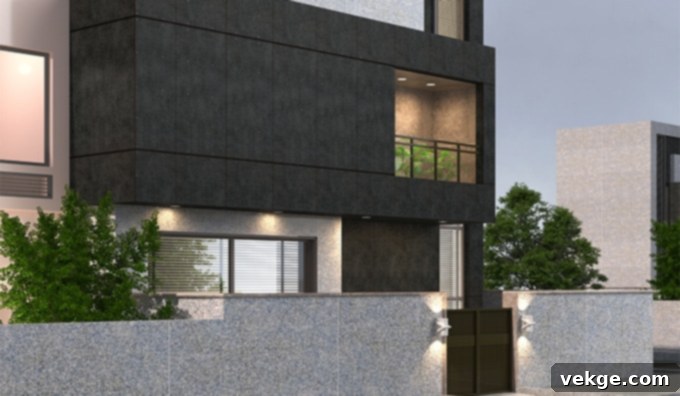Elevate Your Property: A Comprehensive Guide to Exterior Wall Cladding Solutions
External cladding is more than just a protective layer for your building; it’s a powerful design element that can profoundly influence your property’s aesthetic appeal, durability, and energy efficiency. Whether you aim to make a bold architectural statement, create a unique outdoor area, or simply enhance your home’s curb appeal, choosing the right exterior wall cladding can transform your vision into reality. With an impressive array of materials, finishes, and styles available, exterior cladding offers endless possibilities to help your property stand out and reflect your personal taste, all while providing robust protection against the elements year-round.
Investing in high-quality exterior cladding doesn’t just improve the look of your home; it contributes significantly to its long-term value and performance. From modern minimalist designs to rustic charm or industrial chic, the versatility of cladding materials allows for custom solutions tailored to any architectural style. This comprehensive guide explores some of the most popular and effective types of exterior wall cladding, highlighting their unique benefits and design potential to help you make an informed decision for your next project. We’ve covered some of the best designs and ideas for exterior wall cladding below, delving into what makes each material a compelling choice for residential and commercial applications.
Brick Cladding: Timeless Charm and Unrivalled Durability
Brick-style cladding offers a classic, enduring appeal that can instantly add character and texture to the exterior of any property. While it can evoke a traditional, rustic aesthetic, brick cladding is incredibly versatile, lending itself equally well to modern industrial designs when paired with contemporary elements like steel or large glass panels. Its distinct texture and robust nature make it an excellent choice for creating visual interest, whether used sparingly to highlight specific architectural features, such as an entrance or a feature wall, or applied extensively to achieve a unified, stately look across the entire building facade. Available in various colors, from deep reds and earthy browns to contemporary greys and whites, brick cladding offers diverse design possibilities.
Beyond its undeniable aesthetic charm, brick cladding delivers substantial practical benefits. One of its most significant advantages is its contribution to thermal insulation. The additional layer provided by brick cladding acts as a natural barrier, significantly reducing heat loss during colder months and helping to keep interiors cooler in summer. This enhanced thermal performance translates directly into improved energy efficiency, lowering heating and cooling costs and contributing to a more comfortable indoor environment year-round. This passive insulation also reduces your carbon footprint, making brick a sustainable choice for environmentally conscious property owners seeking long-term energy savings.
Durability is another hallmark of brick cladding. Bricks are incredibly resilient, resistant to fire, pests, and rot, ensuring a long lifespan with minimal maintenance. Unlike many other materials, brick retains its color and structural integrity over decades, even in harsh weather conditions, requiring little more than occasional cleaning. This longevity, combined with its protective qualities and timeless aesthetic appeal, significantly increases the long-term value of a property. Property owners often find that the initial investment in brick cladding pays dividends through reduced maintenance costs, enhanced energy performance, and a strong return on investment upon resale, making it a truly worthwhile and enduring choice for any home or commercial building looking for a robust and attractive exterior.
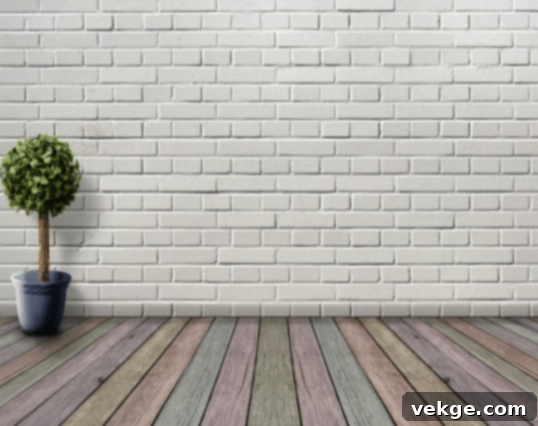
Aluminum Cladding: Modern Versatility and Sustainable Performance
Aluminum wall cladding is a highly popular choice in contemporary architectural design, celebrated for its sleek aesthetics, exceptional versatility, and a myriad of practical benefits. Its clean lines and sophisticated finish enhance modern building designs, allowing for the creation of distinctive, visually striking facades that exude a sense of professionalism and innovation. Aluminum can be treated with various finishes, including powder coating in an almost infinite range of colors, anodizing for increased hardness and corrosion resistance, and even textured surfaces, offering an extensive palette of effects that can be customized to either stand out boldly with vibrant hues or blend seamlessly into specific urban or natural environments with subtle, metallic tones.
One of aluminum’s key design advantages is its remarkable malleability. It can be easily shaped into complex geometric patterns, intricate designs, perforated panels for light and ventilation, and custom sizes, facilitating innovative architectural visions that might be impossible or prohibitively expensive with other materials. This adaptability allows designers to integrate aluminum cladding with other materials such as large expanses of glass, warm wood accents, or robust stone, achieving a cohesive and harmonious look that can gracefully marry traditional and modern aesthetics. Furthermore, aluminum is significantly lighter than materials like steel or brick, which not only simplifies handling and installation, reducing labor costs and construction time, but also minimizes the structural load on buildings, potentially lowering foundation and framing requirements and enabling more creative cantilevered designs.
Beyond its aesthetic and design flexibility, aluminum cladding boasts outstanding performance characteristics. It is exceptionally durable and offers high resistance to corrosion, especially when properly treated, making it particularly suitable for challenging environments such as coastal areas with salt air, or regions with harsh industrial pollutants and extreme weather conditions. Unlike materials that demand regular painting or staining, aluminum requires minimal maintenance; it can withstand adverse weather and retain its pristine appearance with only occasional cleaning, significantly reducing long-term upkeep expenses and ensuring a pristine look for decades.
Moreover, aluminum is a champion of environmental sustainability. It is 100% recyclable, and a high percentage of recycled content is often used in its manufacturing, drastically reducing the overall carbon footprint of a building project. Its reflective properties contribute to thermal efficiency, especially when paired with proper insulation and rainscreen systems. Aluminum cladding can reflect sunlight and heat away from the building, helping to maintain comfortable interior temperatures and significantly reducing energy costs associated with air conditioning. As a non-combustible material, aluminum also enhances building safety by helping to contain fires, offering an additional layer of protection that meets stringent building codes. While the initial cost of aluminum cladding might be higher than some alternatives, its long-term savings from superior durability, minimal maintenance, excellent energy efficiency, and increased property value make it an incredibly cost-effective and smart choice over its extensive lifespan.
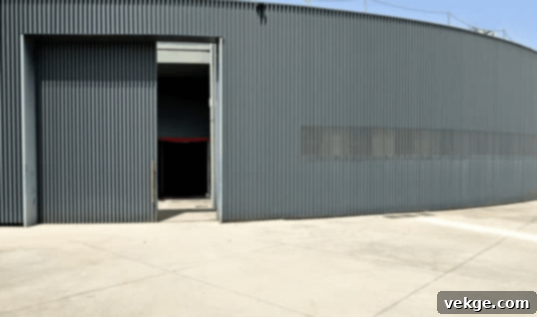
Timber Cladding: Natural Beauty and Warmth
Timber wall cladding is highly esteemed in architectural design for its unparalleled natural aesthetic and the inherent warmth it brings to building exteriors. This type of cladding is particularly popular for instilling a traditional or rustic charm, but its versatility means it can be equally effective in modern designs, especially when utilized in clean, linear patterns or through innovative charring techniques like Shou Sugi Ban, which creates a striking, durable dark finish. Timber cladding can be crafted from a wide variety of wood species, including durable cedar, robust larch, elegant oak, and engineered woods like Accoya, each offering unique shades, grain patterns, and textures. This diversity allows designers to meticulously tailor the appearance to specific style preferences, whether seeking a light, airy feel or a rich, dark statement, and to beautifully complement the surrounding environment, enhancing biophilic design principles.
Beyond its visual appeal, timber cladding offers practical advantages. It is relatively lightweight compared to heavier materials like brick or stone, which significantly simplifies the handling and installation process. This reduced weight also minimizes the structural load on the building, potentially reducing foundation and framing requirements. Timber naturally offers good thermal insulation properties, contributing to a more energy-efficient building envelope by helping to regulate interior temperatures and reduce reliance on HVAC systems. Furthermore, timber cladding provides excellent acoustic properties, effectively dampening external noise and creating a quieter, more serene indoor environment, making it ideal for residential areas or buildings located near busy roads.
However, it is important to acknowledge that timber cladding generally requires more ongoing maintenance than some other materials to preserve its appearance and ensure its longevity. This includes regular treatments to protect against moisture ingress, UV radiation damage that can cause fading or graying, and potential pest infestations like termites or rot. Depending on the wood type and desired aesthetic, this might involve periodic sealing, oiling, staining, or simply allowing it to weather naturally, which many find attractive. Despite these maintenance considerations, the vast design possibilities and environmental benefits of timber make it a compelling choice. Its versatility in finishes—from natural weathering, various stains and paints, to sophisticated charring techniques—allows for immense customization and creativity in design. Sourced from sustainably managed forests, timber is a renewable resource, making it an environmentally friendly option that also sequesters carbon, enhancing a building’s eco-credentials. For those seeking to infuse their property with organic beauty, a connection to nature, and an authentic material, timber wall cladding remains an irresistible and highly valued material for both new constructions and renovation projects.
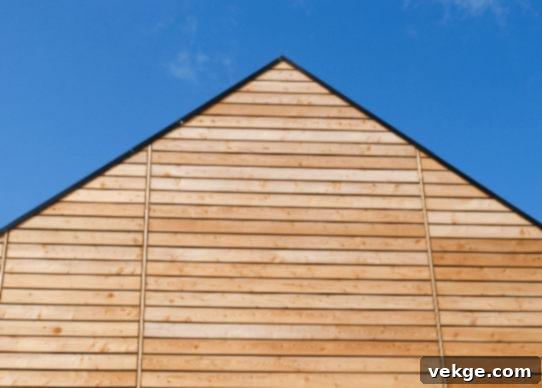
Composite Cladding: The Best of Both Worlds
Composite external wall cladding has rapidly gained popularity in modern architectural design, celebrated for its remarkable robustness, aesthetic versatility, and minimal maintenance requirements. This innovative type of cladding intelligently combines materials such as recycled wood fibers, high-density plastics, and specialized bonding agents to create panels that perfectly mimic the visual appeal of natural wood while offering significantly enhanced durability and performance. Available in an extensive range of colors, textures, and finishes, including realistic wood grain patterns and sleek solid hues, composite cladding allows for the achievement of diverse design outcomes, from sleek, contemporary aesthetics to more traditional, rustic appearances, providing architects and homeowners with exceptional design flexibility without the typical drawbacks of natural materials.
One of the primary advantages that sets composite cladding apart is its exceptional durability. Engineered to withstand the harshest weather conditions, including intense UV radiation (preventing fading), heavy rain, high winds, and extreme temperature fluctuations, it performs flawlessly without succumbing to common issues like cracking, warping, or rotting. This makes it an ideal, long-lasting choice for building exteriors, particularly in climates prone to severe weather or those where traditional wood might struggle. Furthermore, composite cladding boasts significantly reduced maintenance demands; it eliminates the need for periodic painting, staining, or sealing, and is incredibly easy to clean with just soap and water, dramatically lowering long-term upkeep costs compared to natural timber. This translates to more time enjoying your home and less time on burdensome maintenance.
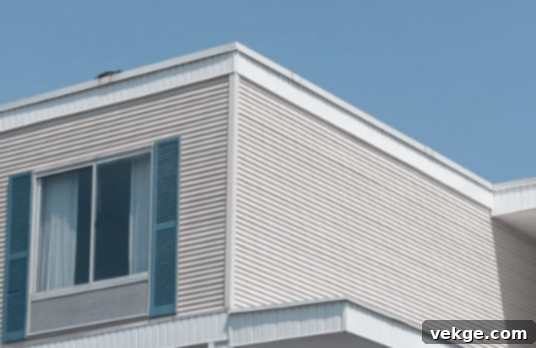
Beyond its robustness, composite cladding is also a responsible environmental choice. Many products are manufactured using a high percentage of recycled materials, such as reclaimed wood fibers and recycled plastics, thereby reducing waste and the demand for virgin resources. It is also often fully recyclable itself at the end of its long service life, further contributing to a circular economy and a lower environmental impact throughout its lifecycle. This material also offers excellent thermal insulation properties, significantly improving a building’s energy efficiency by helping to maintain stable internal temperatures and reducing reliance on heating and cooling systems, leading to substantial energy savings and a more comfortable interior environment.
Moreover, composite cladding is commendably lightweight, which eases the installation process, reduces labor costs, and minimizes the structural load on buildings. Its inherent resistance to common pests like termites, as well as mold, mildew, and rot, further enhances its longevity and appeal as a highly practical and hygienic cladding solution. Considering its exceptional durability, minimal maintenance requirements, aesthetic versatility, and strong environmental credentials, composite external wall cladding presents a cost-effective, visually appealing, and sustainable option for modern construction projects, satisfying both practical and ecological considerations in contemporary building design. It truly offers the best of both worlds, combining the timeless beauty of wood with the unmatched resilience and convenience of advanced materials.
Choosing the Right Cladding for Your Project
Selecting the ideal exterior wall cladding for your property is a crucial decision that impacts aesthetics, performance, and long-term costs. As we’ve explored, each material—be it classic brick, modern aluminum, natural timber, or innovative composites—offers a unique set of advantages. Your choice should align with your architectural vision, budget, local climate, maintenance preferences, and desired environmental impact. Carefully consider the following factors:
- Aesthetics: Do you prefer the timeless warmth and organic texture of brick or timber, the sleek modernity and customizability of aluminum, or the consistent finish and diverse patterns of composite? Each material conveys a distinct character that will define your property’s overall look.
- Durability and Maintenance: How much upkeep are you willing to commit to? Materials like aluminum and composites are engineered for extreme low maintenance, requiring little more than occasional cleaning. Brick offers exceptional durability with minimal fuss, while timber, though beautiful, requires more regular attention to preserve its appearance and integrity.
- Energy Efficiency: All cladding types can enhance insulation, but some, especially when combined with advanced installation systems (like rainscreens and appropriate insulation), offer superior thermal performance. This leads to significant energy savings by reducing heat transfer and maintaining stable interior temperatures.
- Environmental Impact: Consider materials with recycled content, inherent recyclability, and sustainable sourcing. Timber from certified forests, recycled aluminum, and composites made with recycled plastics are excellent choices for reducing your building’s environmental footprint.
- Budget: Initial installation costs vary widely depending on the material, complexity of installation, and labor. However, it’s essential to consider the long-term cost of ownership, which includes ongoing maintenance, potential energy savings over decades, and the material’s impact on property value and resale appeal.
- Local Climate and Regulations: Factor in your local weather conditions (e.g., coastal exposure, extreme temperatures, heavy rainfall) and any specific building codes or aesthetic guidelines in your area.
Ultimately, the perfect exterior cladding solution will not only protect your building from the elements but also enhance its curb appeal, improve its energy efficiency, and contribute to its overall value and longevity for years to come. By carefully weighing these factors and consulting with experienced architects and cladding professionals, you can confidently choose the cladding that best suits your needs and transforms your property into a true masterpiece of design and functionality.
